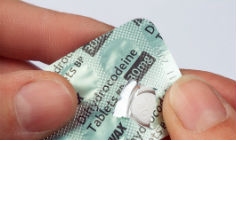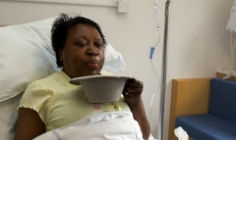Opioids for Persistent Pain: Overview and Evidence course for Nurses



This is the first of two sessions covering the use of oral and transdermal opioids for persistent pain (also referred to as chronic, chronic non-cancer or long term pain). Opioids have proven benefit for treating acute pain and in palliative care, however, the use of opioid medicines in those conditions will not be covered in this session. This session provides an overview of the evidence for using opioids to treat persistent pain, including commonly used opioid medicines, their effectiveness and side effects.
By the end of this session, you will be able to:
- Describe the opioid medicines commonly used for managing persistent pain
- Discuss the effectiveness of opioids when used for persistent pain
- List the common adverse effects of opioid medicines
Strong opioids should always be used as part of a multimodal strategy for pain management utilising non-steroidal anti-inflammatory drugs (NSAIDs) and/or non-opioid painkillers, and/or non-pharmacological interventions when appropriate. It is important to review the risks and benefits of continued opioid therapy on a regular basis.
Emma Davies has been an Advanced Pharmacist Practitioner in Pain for over 12 years. She provides primary care clinics which, although covering medication management, take a holistic approach to supporting people to live effectively with pain. In addition, she teaches, develops guidelines and educational materials and provides advice to the Welsh Government on pain management, as well as being a regular contributor to professional journals.
Co-founder of the livewellwithpain.co.uk website; Emma is also currently studying for a PhD, examining trends in opioid prescribing and healthcare resource utilisation in Wales.

- Anaesthesia | Paediatrics | Pharmacokinetic,Pharma...
- Posted By eIntegrity Healthcare e-Learning
- Posted Date: 2024-11-18
- Location:Online
- This session will provide an overview of pharmacokinetic (PK) maturation during infancy and the use of size models to describe PK differences between children and adults. It will go on to describe known pharmacodynamic (PD) differences and consider the im
- Anaesthesia | Paediatrics | Opioids In Paediatrics...
- Posted By eIntegrity Healthcare e-Learning
- Posted Date: 2024-11-18
- Location:Online
- This session looks at practical opioid pharmacology applied to the clinical use of different agents for neonates, infants and small children.
- Anaesthesia | Paediatrics | Advanced Paediatric Li...
- Posted By eIntegrity Healthcare e-Learning
- Posted Date: 2024-11-18
- Location:Online
- This session addresses the advanced management of the critically ill child and the child in cardiac arrest.
- Anaesthesia | Paediatrics | Head Injury
- Posted By eIntegrity Healthcare e-Learning
- Posted Date: 2024-11-18
- Location:Online
- This session describes the principles of stabilisation and management of a child with a head injury and how this differs from the management of an adult patient. This includes methods of assessment, effects and management of raised intracranial pressure,
- Anaesthesia | Paediatrics | Multiply Injured Child...
- Posted By eIntegrity Healthcare e-Learning
- Posted Date: 2024-11-18
- Location:Online
- This session looks at the initial management and stabilization of the multiply injured child with reference to published trauma guidelines.







